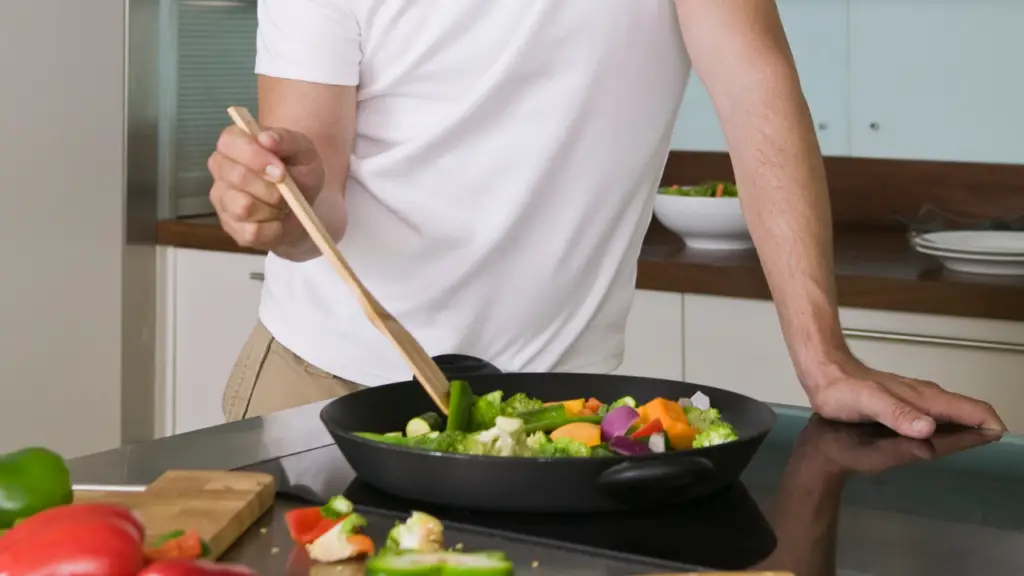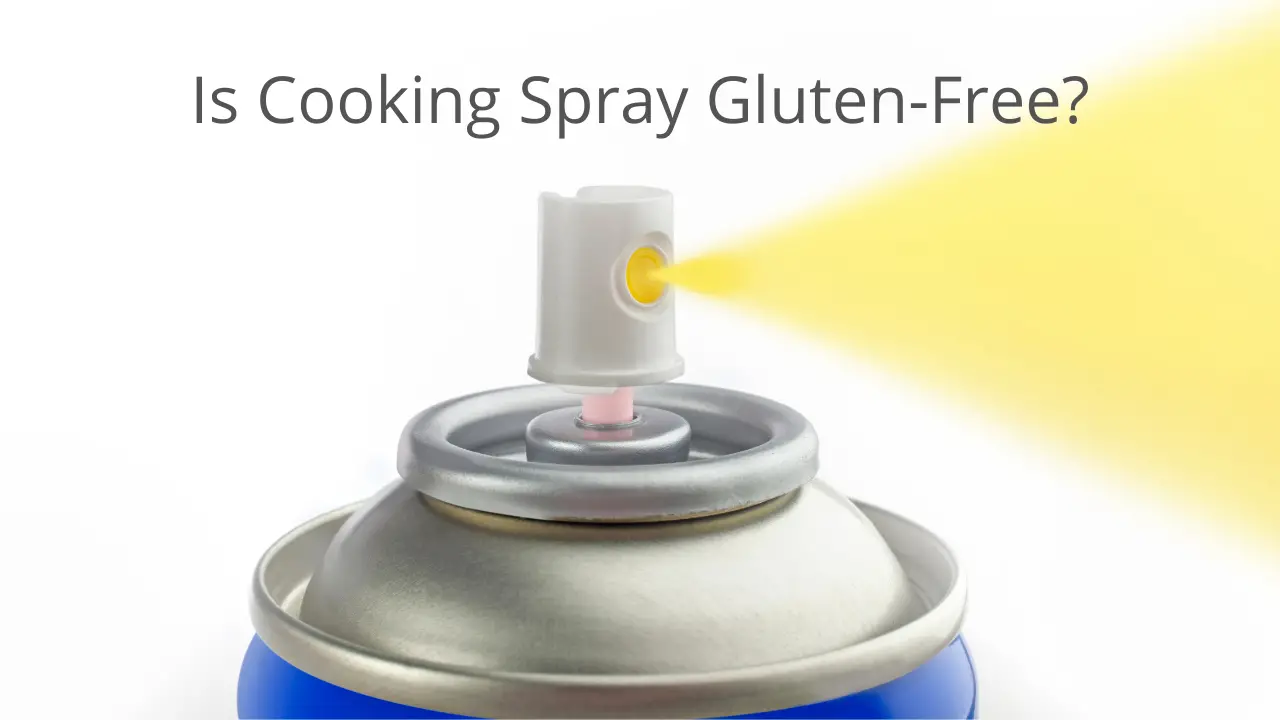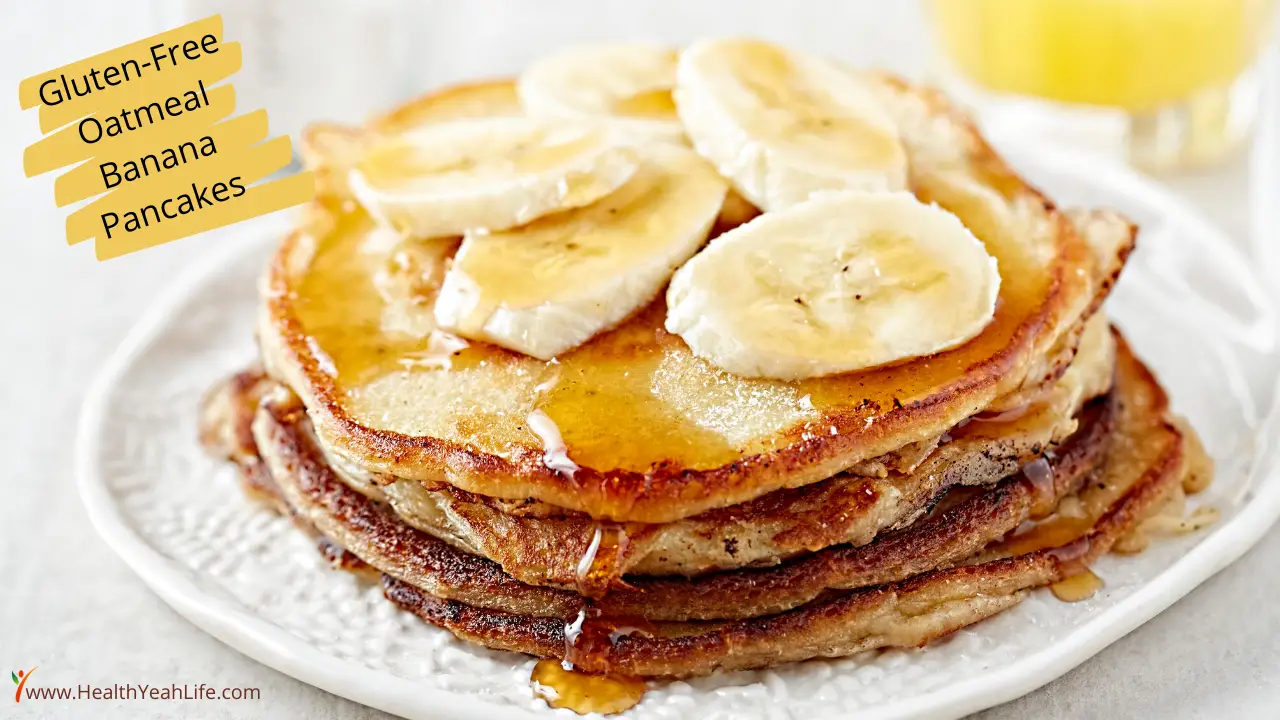With more and more inventions for the kitchen, cooking has become a whole lot easier. You no longer have to worry about a billion things to make a simple dish for your next dinner.
But do you worry about using products such as PAM cooking spray? While PAM cooking spray has undoubtedly become a staple item for many Americans in their kitchen, you may wonder if it is safe?
As with every other product that comes out of a processing site, gluten-free dieters question its safety. And they should, too, considering the smallest amount of gluten can trigger their symptoms. Here is what you should know regarding using this cooking spray on a diet.
What is Cooking Spray?
Let's start with a basic overview of cooking sprays before we move to PAM cooking spray. Cooking sprays are a mixture of cooking oil, soy lecithin, and propellant as a chemical.

Their general function is to prevent food from sticking to cooking pans and baking dishes, which is why they're also called non-stick sprays. Cooking sprays are an alternative to cooking oil, with the added benefit of their non-stick property. They have a similar taste to cooking oils but are slightly milder.
What is PAM Cooking Spray?
PAM started as your average non-stick cooking spray, but they quickly expanded their products. The original version's ingredients are simple- canola, palm, coconut oils, soy lecithin, rosemary extract, dimethyl silicone, and propellants.
Dimethyl silicone is the anti-foaming agent which prevents the cooking spray from foaming at high temperatures. A propellant is a pressurized gas that acts like a spray dispenser.
The company has introduced more flavors in its cooking spray line over the years. These include ones with added flavors like coconut oil, olive oil, and butter flavor. These varieties offer a more intensified taste of the specific oil in their base ingredient. Then, there are also products for particular uses, such as grilling and baking spray.
History of PAM Cooking Spray
PAM cooking spray is the most widely available non-stick cooking spray in the US. It is owned by an American food company named Conagra Brands, Inc., otherwise known as ConAgra foods.
If you're wondering how it got the name, it stands for an acronym, Product of Arthur Meyerhoff.
Arthur Meyerhoff worked in advertising and entrepreneurship. He's the one who established an entire company to market this cooking spray. Hence, the reason it is named after him.
Gluten & Non-Stick Cooking Spray
Again, let's start with the gluten content in general cooking sprays. All non-stick cooking sprays are a mixture of oils, lecithin, and propellants. Manufacturers may add preservatives or use a different combination of oils than another one.
However, traditionally, these three base ingredients form a cooking spray. Propellants and soy lecithin cannot have gluten in any form. The first one is from chemicals, and the second is made from soybeans but processed to the extent that no gluten remains.

The problematic factor may be the oils used in the cooking spray. While cooking oils themselves are, once again, gluten-free, they may come across cross-contamination at manufacturing sites.
When the oils contain gluten, the end product can have gluten in it too. Albeit the gluten content due to cross-contamination is low, it's still possible for celiacs and gluten-sensitive patients to react to it.
Gluten & PAM Cooking Spray
On to the hot topic- the gluten content in PAM cooking spray. PAM cooking spray, too, has base ingredients similar to other cooking sprays. So, the leading problematic cause for almost all PAM cooking sprays is the cross-contamination factor.
Unless a product is specifically labeled gluten-free, the manufacturing sites may contain gluten. It means that while PAM cooking spray does not contain gluten-based ingredients, there could be gluten in it.
The only way out of this issue is to know your body's sensitivity level to gluten. If your symptoms trigger the slightest amount of consumption, avoid this product. Instead, go for a labeled or certified gluten-free non-stick cooking spray. This way, the ingredients are gluten-free, and there's minimal risk of cross-contamination.
However, not all PAM cooking spray versions are gluten-safe if you're thinking of deterring from the original. You can have the flavored varieties if the cross-contamination risk doesn't bother you.

The main issue resides in PAM's baking spray; the company mentions using flour as the baking spray's base ingredients. Baking sprays are, in definition, cooking sprays, but with flour as the additional ingredient to assist better baking results.
In return, the flour turns out to be the gluten-based culprit, making this product not safe for gluten-free dieters. Whether or not you're doubtful about the cross-contamination factor for other varieties, steer clear of this one.
Taking this out from your diet won't be the end of the world either. You can use the original or flavored version or go for a gluten-free cooking spray specialized for baking.
Besides that, if there's a new variety or you're looking for other cooking spray substitutes, always check the label. That'll give you an idea about the gluten content of the product based on the ingredients.
Don't forget to look out for gluten-based additives. The safest option is to purchase gluten-free brands that don't contain gluten-based ingredients and are not contaminated.
Is PAM Cooking Spray Safe?
Firstly, looking at the ingredients, this cooking spray has soy lecithin in it. Soy lecithin is highly processed and should be avoided when possible.
Individuals who have soy allergies need to avoid using foods with lecithin. However, if it's unavoidable, they can go for foods with lecithin made from eggs.

Regarding the general health concerns regarding how safe cooking sprays are, it's a controversial debate. Some say that no matter how much you use cooking sprays, they're not harmful.
Meanwhile, others believe that cooking sprays contain tons of chemicals. In return, this makes them toxic to an individual's body, primarily when used excessively. The ingredients that come under scrutiny are lecithin and propellants that are commonly propane or butane.
What To Look For When Buying Cooking Spray
You need to look out a few things when adding PAM cooking spray to your kitchen staples. The first is its high risk of flammability. Every cooking spray, including PAM, has propane or butane as fuel.
These pressurized gases make the spray can and its content increasingly flammable. Plus, there have been numerous cases in the past where PAM cooking spray has exploded in kitchens.
The results were severe injuries, including third-degree burns. So, if you are buying the spray, make sure to keep it away from heat. Don't store it at high temperatures and keep it safe from the stove, oven, and microwave.
Secondly, PAM is not a labeled GF product. Consequently, while it is naturally gluten-free, that does not omit the risk of cross-contamination. Ultimately, the cooking spray could contain more than 20 ppm gluten.

Therefore, avoid it if you have extreme celiac or gluten sensitivity where the symptoms appear on the most negligible accidental intake.
Some other tips for using PAM is to toss out any unused spray. If it's been sitting in your kitchen for more than two years, you shouldn't use it anymore. While cooking sprays usually don't have a specific shelf-life, it's best not to put your health at risk.
Another amateur mistake is using PAM on non-stick cooking pans. Non-stick cooking spray and non-stick cooking pans do not go together in any case. Don't do this if you don't want to end up with pans with black, gummy residue. Either use a standard pan or go for butter or cooking oil when using non-stick pans.
PAM Cooking Oil for Low-Fat, Low-Calorie Diet
PAM cooking sprays can go with any diet. It's naturally gluten-free, not considering cross-contamination, dairy-free, and vegan-friendly. And it has a significantly lesser amount of calories and fats, more so than butter or cooking oil.
In a single spray, there's only 0.2 g total fat and two calories. That amount is still lesser than the fats and calories in even a single tablespoon of butter. You can use it for cooking, frying, grilling, dressing, and baking.
However, don't look for low-fat, low-calorie, substitutes for fats like butter only to eat more junk food. Many amateurs make the mistake of switching to cooking spray because of its minimal fats and calories.
It may seem like a great option if you're keeping a check on your calorie and fat intake. But using olive oil, avocado oil, or butter are healthier products to use while cooking.
Final Words

Many processed foods are naturally gluten-free but run the risk of cross-contamination. And, PAM cooking spray makes it on the list.
There are many healthier options to use, and I suggest trying olive oil, avocado oil, and butter while cooking and baking.
You can also use parchment paper as an alternative and not worry about adding calories or using processed products.





